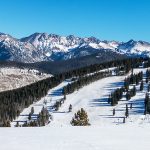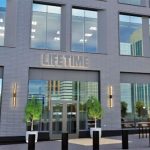PeopleForBikes and the Alliance for Biking & Walking released a report Wednesday titled Building Equity. Race, Ethnicity, Class and Protected Bike Lanes: an Idea Book for Fairer Cities.
The report features stories from planners, leaders and activists in communities of color around the country who are working to build connected, all-ages bike networks. Essential to these networks are protected bike lanes, which are on-street lanes separated from traffic by curbs, planters, parked cars or posts. A review committee of transportation equity experts from city government, consulting, advocacy and academia guided the report.
“This new idea book is a resource for city staff and bicycling advocates across the country, as well as anyone motivated to help create more diverse and equitable American cities,” said Martha Roskowski, vice president of local innovation at PeopleForBikes, which represents both cyclists and the bicycle industry. “We hope that it can be a useful tool to help people better understand these complicated and crucial topics.”
The 36-page report has three main components:
- Profiles of 10 people of color from around the country who are, for diverse reasons, advocating for protected bike lanes in their communities.
- Data-rich explorations of the role good bike infrastructure has played in advancing equity in Colombia, Denmark and China.
- A collection of statistics, new and old, about the intersections of race, ethnicity, income and bike infrastructure, including some from a major new statistically valid survey of U.S. biking habits.
Some of the newer statistics on equitable biking were derived from the first-of-its-kind U.S. Bicycling Participation Report, commissioned by PeopleForBikes, which was released on March 2. Some of the key findings include:
- The lowest-income households bike the most
- The lower the income, the less you drive
- Hispanic people bike for recreation the most
- People of color bike for transportation most
- People of color care more about protected bike lanes
“Through curating these stories, we learned that advocates and cities need to work with underserved communities in thoughtful and proactive ways, as they have the potential to benefit from advanced bike infrastructure like protected bike lanes the most,” said Alliance for Biking & Walking President/CEO, Jeffrey Miller.
A free copy of the 36-page report can be downloaded here, or requested via an email to info@greenlaneproject.org.















